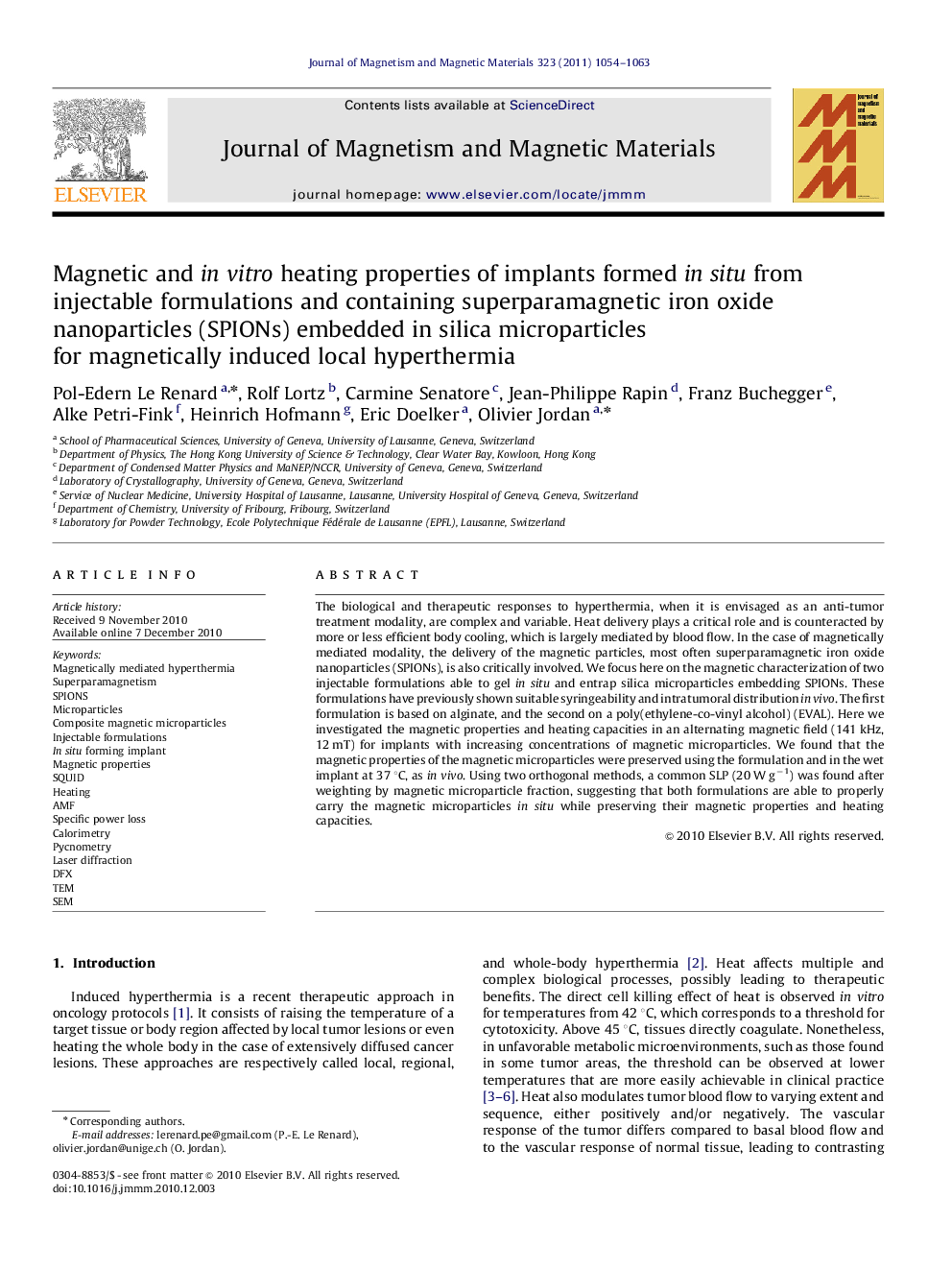| Article ID | Journal | Published Year | Pages | File Type |
|---|---|---|---|---|
| 1800499 | Journal of Magnetism and Magnetic Materials | 2011 | 10 Pages |
The biological and therapeutic responses to hyperthermia, when it is envisaged as an anti-tumor treatment modality, are complex and variable. Heat delivery plays a critical role and is counteracted by more or less efficient body cooling, which is largely mediated by blood flow. In the case of magnetically mediated modality, the delivery of the magnetic particles, most often superparamagnetic iron oxide nanoparticles (SPIONs), is also critically involved. We focus here on the magnetic characterization of two injectable formulations able to gel in situ and entrap silica microparticles embedding SPIONs. These formulations have previously shown suitable syringeability and intratumoral distribution in vivo. The first formulation is based on alginate, and the second on a poly(ethylene-co-vinyl alcohol) (EVAL). Here we investigated the magnetic properties and heating capacities in an alternating magnetic field (141 kHz, 12 mT) for implants with increasing concentrations of magnetic microparticles. We found that the magnetic properties of the magnetic microparticles were preserved using the formulation and in the wet implant at 37 °C, as in vivo. Using two orthogonal methods, a common SLP (20 W g−1) was found after weighting by magnetic microparticle fraction, suggesting that both formulations are able to properly carry the magnetic microparticles in situ while preserving their magnetic properties and heating capacities.
Research highlights► Magnetic formulations that form implants on injection into tissues are proposed for hyperthermia. ► Superparamagnetic properties of the SPION–silica composite microparticles are preserved in the wet implants. ► Heat-dissipating properties (SLP of 20 W/g of implant) support in vivo use.
